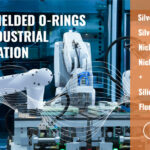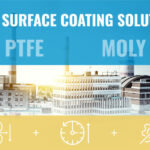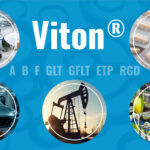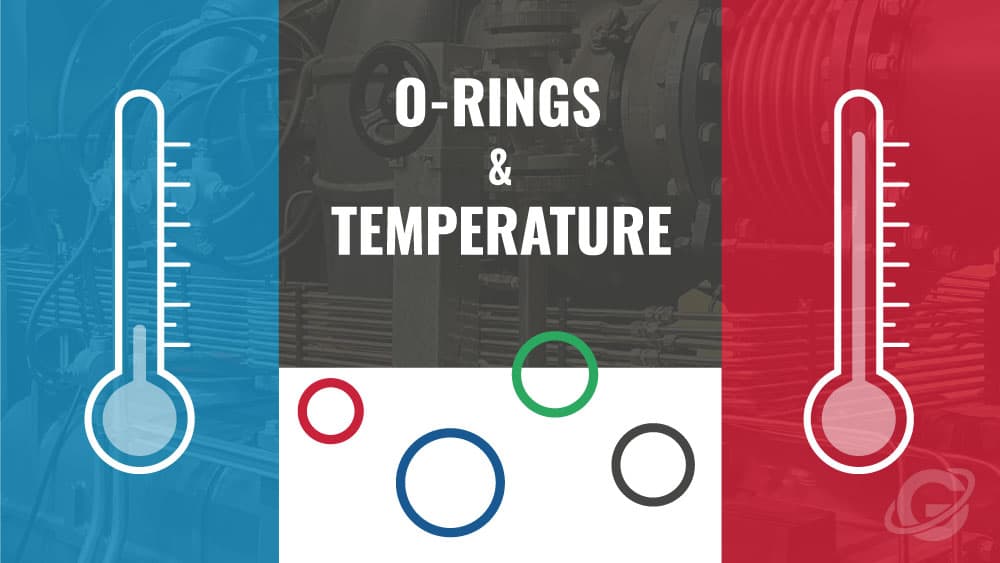
Summary
- Temperature significantly impacts o-rings, affecting properties like elasticity and hardness, requiring specialized knowledge for optimal performance in various industrial applications.
- The interplay between temperature and material characteristics, such as expansion, compression set, and chemical resistance, underscores the complexity of o-ring design and selection.
- Proper temperature management, regular maintenance, and understanding of temperature’s effect on lifespan are crucial for efficient and cost-effective o-ring solutions, reducing downtime and failures.
Introduction
O-Rings are pivotal sealing agents of numerous industrial applications. They cater to different needs and are made from various materials such as Buna, Viton®, EPDM, and others. One factor that influences their functionality and durability is temperature. This post explores the relationship between temperature and o-rings, delving into the science, practical implications, and guidelines for industry professionals.
Temperature’s Role in O-Ring Performance

Temperature has a fundamental relationship with o-rings. Temperature changes affect the o-ring’s elasticity, hardness, and overall behavior, directly impacting its performance. Proper understanding and management of temperature are, therefore, essential for maximizing the efficiency of these seals.
Temperature’s effect on the elasticity of o-rings is profound. As temperature increases, materials like Buna or Viton® may become more elastic, improving their ability to conform to mating surfaces. Conversely, a decrease in temperature might cause them to become more rigid, reducing their sealing effectiveness. Understanding this relationship between temperature and elasticity is crucial in material selection, especially in applications where temperature fluctuations are common, as it directly influences the o-ring’s ability to seal.
The impact of temperature on hardness is another vital consideration. High temperatures might reduce the hardness of materials like EPDM, causing them to deform more easily under pressure. This deformation could compromise the o-ring’s ability to maintain a consistent seal. On the other hand, low temperatures might increase hardness, leading to potential brittleness and cracking. Understanding and managing hardness across various temperature ranges ensures the durability and functionality of o-rings in different applications.
Temperature’s overall effect on o-ring behavior is complex, encompassing elasticity, hardness, compression set, and chemical resistance. From altering the physical properties to affecting how materials interact with surrounding media, temperature’s role is pervasive. For example, an o-ring’s opposition to specific chemicals may change with temperature, altering its effectiveness in particular environments. Appreciating these overall effects helps in designing o-rings that perform reliability across a wide range of conditions.
Maintaining temperature control holds immense significance. Engineers and designers can optimize material selection and design for specific temperature conditions by comprehending how temperature impacts elasticity, hardness, and overall behavior. This optimization includes choosing suitable materials and considering factors like cross-section design, surface finish, and installation procedures. Effective temperature management ensures that o-rings perform consistently, reduces the risk of failure, and prolongs their lifespan, ultimately contributing to more efficient and reliable industrial applications. To view the recommended temperature range for various materials, visit our compound page.
The Science Behind Material Expansion and Contraction
Thermal expansion and contraction are inherent to all materials, and o-ring materials are no exception. These phenomena occur as the temperature changes, leading to the expansion or contraction of the o-ring material. Different materials respond differently to temperature changes, and understanding how materials react to these fluctuations is vital in predicting their sealing performance.
The physics of material response to temperature change is rooted in molecular behavior and is a key to understanding how different materials respond to temperature extremes. At higher temperatures, molecules move more, causing expansion, while at lower temperatures, they move less, leading to contraction. Specific material characteristics, such as molecular structure and bonding, will determine how each material reacts to temperature. For example, Viton’s fluoroelastomer structure may offer high-temperature stability, while Buna’s acrylonitrile content might provide a more balanced temperature response. Such technical insights are instrumental in material selection and design.
The impact on sealing capabilities due to expansion and contraction can be significant. If an o-ring expands too much, it may cause excessive pressure against the mating surfaces, while contraction might lead to leakage. Various factors, including material composition, cross-sectional design, and application pressure, affect how an o-ring will react. Understanding these complexities and the interplay between physical properties and environmental conditions is essential to engineering precise and reliable solutions. Both scenarios can lead to failure and necessitate intricate material selection and design to avoid such outcomes.
Effect of Temperature on Compression Set
Compression set in o-rings refers to the permanent deformation that occurs after the removal of compressive force. It’s an essential aspect of o-ring performance, as the ability to recover from deformation ensures an effective seal. Temperature plays a crucial role in this property, with high and low extremes affecting the o-ring’s ability to rebound and maintain its seal.
Temperature’s effects on compression set properties are intricate and can be positive and negative. High temperatures cause some materials like Buna to lose their elasticity, leading to a higher compression set due to the increased mobility of polymer chains. Conversely, excessive heat might enhance the performance of materials like Viton, as its polymer structure could become more compliant. On the low end, cold might cause materials like EPDM to become too rigid, affecting their ability to recover from deformation due to decreased molecular mobility. Contrarily, depending on their specific composition and structure, some materials exhibit better resilience at lower temperatures. Understanding these nuanced interactions between temperature and material properties is essential for making optimal selections and designs, as they can result in differing sealing performances.
Material composition, design, application conditions, and temperature range influence compression set resilience. For instance, how temperature affects Viton might differ from Silicone due to their inherent molecular structures and bonding mechanisms. Viton’s heat resistance arises from its fluorinated polymer chains, while Silicone derives its flexibility at lower temperatures from its distinctive molecular architecture. Relating these properties to specific temperature conditions and understanding their effect on compression set is paramount for material selection and design.
Guidelines for minimizing temperature-induced compression set damage include proper material selection, design considerations, and regular maintenance. This minimization entails understanding the temperature ranges the o-ring will be exposed to and selecting materials and designs that can withstand those conditions. Routine inspection and maintenance further ensure that any temperature-related wear and tear are detected and addressed promptly, mitigating potential failures and extending the lifespan of the o-ring.
Temperature’s Impact on Chemical Resistance
Understanding the relationship between temperature and chemical resistance is paramount in designing and applying o-rings. The interaction between temperature and material compatibility influences o-ring performance, particularly in industrial environments where exposure to various chemicals is frequent.
Temperature’s influence on chemical resistance in o-rings is complex and convoluted. Increased temperatures may cause materials like EPDM to become more permeable to certain chemicals due to the increased movement of polymer chains, making the structure more open and allowing chemicals to penetrate more easily. Conversely, decreased temperatures make materials like Viton more resistant to specific chemicals by causing the molecular structure to tighten, reducing permeability. These nuanced changes have significant implications for maintaining sealing integrity and must be thoroughly understood and accounted for in design and material selection.
Ensuring optimal performance in chemically demanding environments requires a deep understanding of the interaction between temperature and material compatibility with chemicals. It’s not merely about selecting materials resistant to specific chemicals; it’s about understanding how that resistance fluctuates across the application’s temperature range. This understanding involves studying the molecular structure and behavior of materials like Buna, Viton, or Silicone and assessing how they respond to different temperature environments in conjunction with various chemicals. Factors such as the type of chemical, concentration, exposure duration, and thermal history can all affect chemical resistance. Careful consideration of these factors and rigorous testing under varying temperature conditions ensure a robust and reliable seal in even the most challenging environments.
Impact of Temperature on Lifespan of O-Rings
Understanding how temperature extremes shorten or extend o-ring lifespan is a multifaceted consideration in both design and maintenance. Extreme temperature conditions can have varying effects, with extreme heat accelerating aging and degradation, while extreme cold may cause brittleness and cracking.
The correlation between temperature stability and long-term performance is significant. Materials that maintain their properties across a wide temperature range tend to perform better over the long term. By selecting such materials, engineers can enhance the o-ring’s durability and reduce the need for frequent replacements, emphasizing the importance of temperature management.
How temperature affects aging and degradation processes is elaborate. Factors such as oxidative aging, thermal stress, and continuous cycling may interact in ways that accelerate wear. Understanding these intricate interactions and their effects on the lifespan of the o-rings requires regular monitoring and maintenance, matched with proper material selection. These practices can mitigate the adverse effects of temperature and prolong the o-ring’s lifespan.
Monitoring temperature for preventive maintenance is intricately woven into the broader considerations of the lifecycle. Regular checks detect early signs of wear and potential failure, allowing for timely intervention. This proactive approach reduces downtime, saves costs, and forms part of a comprehensive strategy, ensuring continuous and reliable equipment operation.
Assessing temperature management’s overall lifecycle cost implications means considering a holistic view of material costs, maintenance, potential downtime, and replacement needs. Proper temperature management and understanding the dynamics between temperature and material behavior can lead to more efficient and cost-effective solutions, including extending the lifespan of the o-rings and preventing premature failures, contributing to a more sustainable and economical approach to sealing applications.
Conclusion
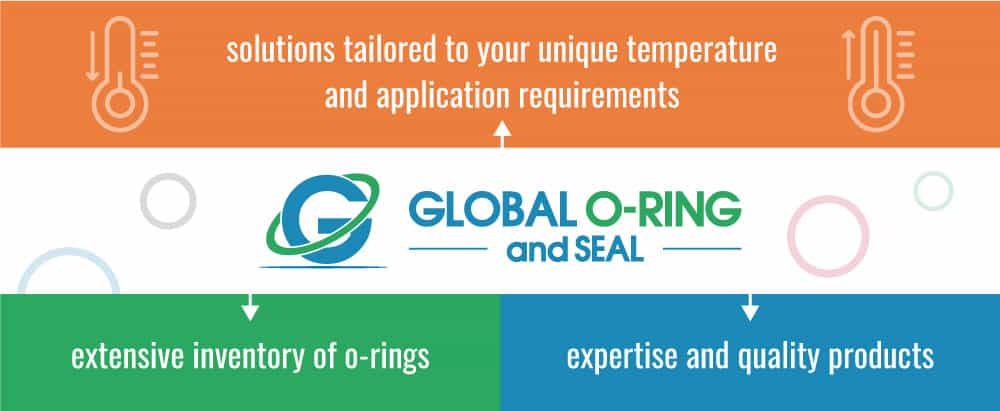
Temperature plays a critical role in o-ring selection and application. From influencing physical properties to chemical resistance and overall lifespan, temperature’s impact is profound and wide-reaching. Optimal o-ring performance is achievable through careful consideration of temperature effects, material selection, design, and regular maintenance, ensuring reliability and efficiency in various industrial applications.
Understanding the intricate relationship between temperature and o-rings is more than selecting a suitable material. It involves a comprehensive approach considering the entire application, from design and material selection to ongoing maintenance and monitoring. This integrated perspective leads to superior performance, reliability, and cost efficiency, making it a cornerstone of effective o-ring utilization in the modern industrial landscape.
Global O-Ring and Seal specializes in solutions tailored to your unique temperature and application requirements. Leveraging our extensive inventory of o-rings, we offer the expertise and quality products that align with the complexities of temperature management. Partnering with us ensures that you have the resources and knowledge necessary to navigate the challenges of temperature-related o-ring performance.

 English
English  Español
Español  Français
Français  Português
Português  Deutsch
Deutsch  Italiano
Italiano  Русский
Русский  中文
中文  日本語
日本語  العربية
العربية  हिन्दी
हिन्दी 